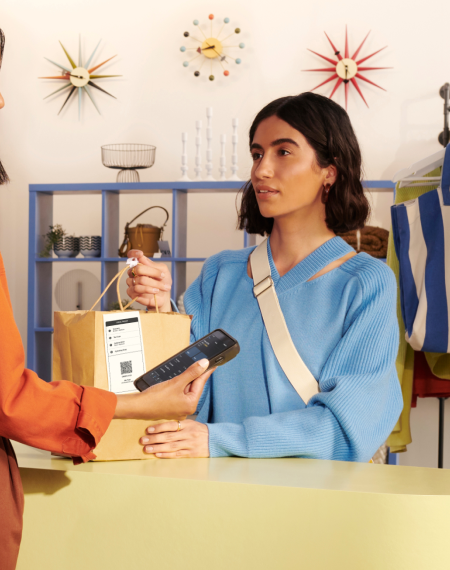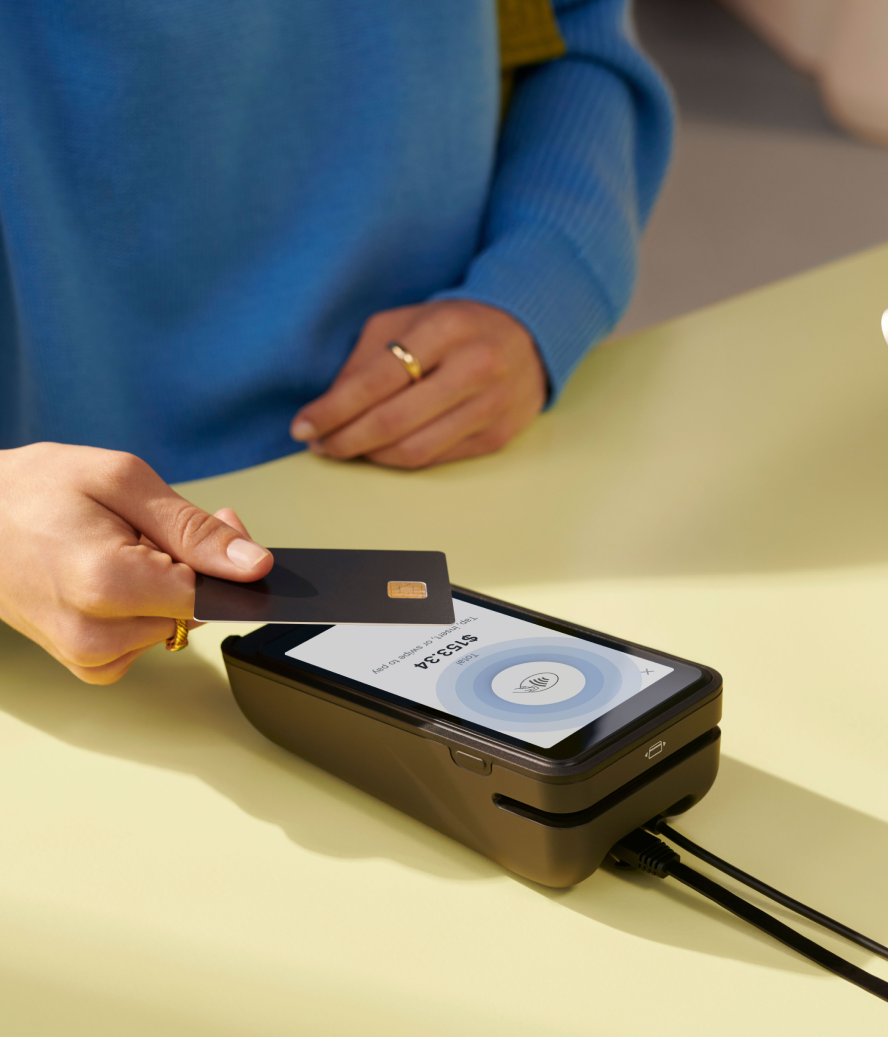Before iconic clothing retailers dominated shopping malls and ecommerce shopping carts, they hung a shingle from a single storefront. If you’ve ever toyed with opening a clothing store, you might use this as inspiration.
Despite growing market saturation, largely due to the rise of digital-first brands, opportunities abound: apparel is still a flourishing industry with new concepts launching daily.
Whether you wish to open an online clothing store, a brick-and-mortar location, or a hybrid of the two, gaining a foothold in the fashion industry is absolutely possible. Here’s a rundown of what it takes to open your own clothing store—from drafting a business plan to securing financing to claiming your special niche in the apparel industry.
How to open a clothing store
- Develop a niche and mission statement
- Choose your clothing sources
- Legally establish your clothing business
- Find a physical store location
- Acquire applicable permits, licenses, and insurance
- Design your store’s layout
- Choose a point-of-sale system
- Hire retail staff
- Streamline store operations
- Develop a marketing strategy
- Think about the in-store experience
- Network with other local businesses
Much like launching any other retail store, launching a clothing store involves a mixture of legal compliance, financing, marketing, and operations. Here’s a breakdown of the process.
1. Develop a niche and mission statement
Every successful small clothing store needs a clear focus. Think about what type of clothing store you want to open, who will shop there, and which problems you’ll solve for shoppers.
It helps to match what you love with what your community needs. For example, a recent Business of Fashion report found that older shoppers (57+) now drive 37% of apparel spending and are expected to contribute nearly half of its growth in the near future, so you might target underserved niches within this growing demographic.
Your store needs something that makes it different from others. This could be:
- Selling clothes no one else in town offers
- Using eco-friendly materials
- Having the best customer service
- Offering unique sizes other stores don't carry
For example, Mizzen+Main created dress shirts with performance fabrics that look professional but feel like athletic wear, solving the problem of uncomfortable business attire.
Within your business plan, draft a simple mission statement to keep this unique selling proposition in focus—both to your customers and you as you grow and market the new clothing business. Your brand identity might hinge on “We provide affordable workout clothes for everyday people” or "We sell high-quality children's clothes that last.”
2. Choose your clothing sources
One of the most important decisions for your clothing store is what to put on your racks and website. You have several approaches to consider: create your own clothing line, partner with other retailers that match your store's style, or a combination of both.
If you’re exploring secondhand or vintage apparel, note that 67% of brands expect resale to generate over 10% of revenue within the next five years, according to a resale market report from Thred Up. This underscores how resale and sustainable fashion are on the rise—and could be a strong niche if you want to stand out.
There is no “best” option—it depends on your goal and why you’re starting the store. If you have a passion for fashion design and like to manufacture your own clothes, you can get started with just a sewing machine and a roll of fabric. If you know what looks good but don’t care to be involved in the manufacturing process, source inventory from reliable wholesale clothing suppliers.
Your sourcing strategy can evolve over time. Many successful retailers start with a focused approach (like perfecting one signature item) before expanding their selection.
3. Legally establish your own clothing business
As a small business owner, you must legally establish your business entity in the state where you primarily operate. You’ll likely choose one of these two business structures for your clothing store:
- Sole proprietorship, where there’s no legal distinction between yourself and the clothing store. It’s quicker to get up and running, but you’re personally liable for every aspect of the business.
- Limited liability company (LLC), where you and your business are treated as two separate entities. This can protect your personal assets from debt, but any profits and losses are reported on your personal tax return.
You’ll have to obtain an employer identification number (EIN) from the IRS to use for tax reporting. Many banks also require this EIN when setting up a business bank account. Shopify provides state-specific startup guides that acquaint you with business registration requirements in most of the US.
4. Find a physical store location
When opening a clothing store, you need a retail space—a place to sell products directly to customers in the flesh. Unlike other commercial spaces (like offices or warehouses), retail spaces attract shoppers and showcase your merchandise.
The right location can make or break your clothing business:
- High-traffic areas: Choose places where your target customers already shop or spend time.
- Visibility: A storefront that's easy to spot from the street helps attract walk-in customers.
- Nearby businesses: Being close to complementary businesses (like coffee shops or other fashion retailers) can increase foot traffic.
You can find spaces from a commercial real estate website, network with other business owners, or simply explore neighborhoods and look for “For rent” or “For lease” signs. Consider working with a real estate agent who can save you time by finding spaces that match your needs and budget.
5. Acquire applicable permits, licenses, and insurance
Your new clothing business may need a business license, a tax license, or industry-specific permits to operate in a state or local community.
Because these rules vary dramatically by state (for example, California has a sales tax rate of 7.25% while Delaware and Montana have none), it’s best to consult your state and local laws for specific requirements in your region.
You may also need to carry business insurance, particularly if you operate a brick-and-mortar location. There are multiple options, including workers’ compensation insurance, cyber insurance, and commercial property insurance. Insureon estimates that general liability insurance, which covers common risks like customer injuries and lawsuits, costs around $42 per month.
6. Design your store’s layout
How you arrange your clothing store affects both shoppers' experience and your daily operations. A good store layout can boost sales, reduce theft, and make your own clothing line memorable.
Here are the zones you’ll need to keep in mind when arranging your clothing store’s layout:
- Customer areas: Save at least 70% of your floor space for shoppers to move around easily. Keep aisles wide (at least four feet) so customers don't feel cramped, with clear paths that guide shoppers through your store in a logical way—usually moving counterclockwise.
- Display space: Put new or seasonal items near the entrance, place your most profitable items at eye level, and create attention-grabbing displays with mannequins. Try grouping items in threes for a pleasing look.
- Fitting rooms: Make sure these areas have good lighting, flattering mirrors, enough hooks for clothes, and some seating. Shoppers often decide to buy based on their fitting room experience, so ensure privacy, cleanliness, and enough space.
- Storage: You need organized space for extra inventory. Install shelves, hanging racks, and a system that helps staff find items quickly. Think about where you'll store seasonal items and how staff can restock without getting in customers' way.
- Staff area: Set aside space where employees can take breaks, store personal items, handle paperwork, and receive training. Include basics like a desk, computer for tracking inventory, and maybe a small fridge and microwave.
- Checkout counter: Put your cash register where staff can see it throughout the store while being easy for customers to find. Make sure there's enough counter space for bagging purchases and displaying small impulse-buy items.
Try to use movable fixtures when possible so you can change your layout for different seasons, or just to keep things fresh for returning customers.
7. Choose a point-of-sale (POS) system
Your point-of-sale (POS) system is the technology that powers every aspect of your clothing store. More than just a tool to ring up customer orders, cashiers in your boutique can use the POS system to retrieve inventory data, reference customer data, and process payments—sometimes from anywhere in the store.
Look for a clothing store POS that offers seamless unification with your online store. Shopify is the only platform to do this natively. Both POS and ecommerce are built on the same platform so your data feeds back to one central operating system. Inventory, customer, and order data is consistent everywhere you sell.
This approach lets you offer seamless omnichannel experiences that modern customers demand, whether that’s:
- Displaying inventory levels at a customer’s nearest store on a product page
- Letting customers buy products online to pickup in-store
- Using ship-to-home to take payment for in-store orders and passing the details onto a warehouse for fulfillment
The benefits of unified commerce are proven. According to a recent study, retailers using Shopify POS benefit from 7% lower third-party support costs and operational improvements that contribute a benefit equivalent up to a 5% uplift in sales.
It’s no wonder that 62% of Shopify POS customers in the apparel and accessories industry have recommended the platform to someone else.*
8. Hire staff
It’s difficult to run a clothing store singlehandedly. Whether you get help serving customers during busy hours, restocking inventory, or designing window displays that entice people in, it helps to build a team before you open to the public.
Use team scheduling apps that integrate with your POS system, like EasyTeam for Shopify POS, to identify peak shopping times and schedule staff rotas accordingly.
Remember: it costs a lot to replace workers—up to 9 months of their salary. Use staff training tools to teach about your products, mentoring to build customer service skills, and offer job shadowing opportunities where new staff learn by watching experienced workers. Create a simple guide with all your store rules and product information that staff can check when needed.
Perhaps the most important is POS training so that new hires become literate with your store’s operating system. Your choice of technology matters. Retailers like Tomlinson's have reduced staff training time by 32% after switching to Shopify’s intuitive system with built-in training resources.
“There was no downtime when we made the switch to Shopify POS,” says owner and operator Kate Knecht. “We were able to train in a sandbox environment for a month and a half prior to the launch to allow our team to get used to the system. I was able to ‘soft launch’ our production environment a week prior to going live so stores could test building carts and work out any kinks. That was a huge help.”
9. Streamline operations
Solid retail operations are the daily activities that keep your business running efficiently. It covers components such as:
- Customer service that feels consistent across all channels through unified customer profiles
- Inventory management that prevents costly stockouts or overstocking
- Streamlined checkout processes that reduce abandoned purchases
- Easy returns and exchanges turn potential disappointments into new sales
- Staff management with proper training and scheduling
In addition to processing payments from your POS system, you must handle administrative tasks like accounting, inventory management, customer relationship management (CRM), and sales tax remittance. Shopify POS handles all of these tasks and more, thanks to its robust features suite.
For instance, when a customer makes a purchase, Shopify POS can automatically calculate the required sales tax, add the transaction to your sales ledger, update your inventory stock, and add the customer to your CRM database.
10. Develop a marketing plan
To drive foot traffic to your brick-and-mortar store, develop a targeted local marketing strategy. Start by establishing a strong online presence through local SEO and a Google Business Profile to appear in nearby searches. Engage with community members through local social media groups and geotargeting to reach potential customers within your store's vicinity.
Other effective local marketing strategies you can use to drive foot traffic towards your clothing store include:
- Hosting in-store events or workshops
- Partnering with complementary local businesses
- Creating eye-catching storefront signage
- Securing local media coverage
- Collecting customer emails at checkout
- Using geotags on social media posts
- Sponsoring community events
For example, lingerie retailer LIVELY offers bra fitting sessions. Online shoppers can schedule their session through the brand’s ecommerce website, then turn up at their nearby store to receive personalized sizing details and product recommendations from their fitting specialist.
LIVELY found something interesting about the shoppers who booked one of these fitting sessions: not only do they account for 30% of all in-store revenue, but they also spend between 60-80% more during their visit.
Also, keep in mind that 18% of all social commerce transactions already involve apparel, so leveraging social channels can be huge for driving sales and building brand awareness. Whether it’s short-form video on TikTok or livestreaming events on Instagram, social-first shopping is quickly becoming the new normal, as evidenced by a recent report from Accenture.
11. Think about the in-store experience
Your fashion retail store must offer in-store experiences that others can't replicate. It’s a foolproof way to drive customers towards your clothing store and get people talking.
Some 75% of shoppers are likely to spend more after receiving high-quality service in a physical store, so every additional detail—friendly staff, pleasant lighting, convenient fitting rooms—can translate directly into higher sales
Western-wear retailer Tecovas provides an excellent blueprint for creating memorable in-store moments. Its "radical hospitality" philosophy transforms shopping from a transaction into an experience.
When customers visit a Tecovas store, they're offered complimentary beverages and boot shines, unexpected luxuries that elevate the ordinary to the extraordinary. Behind the scenes, Tecovas empowers store associates with custom POS UI extensions that surface customer information in real-time, so staff can provide personalized recommendations based on previous purchases.
This approach has proven so successful that Tecovas has expanded to over 30 locations, demonstrating that investing in distinctive in-store experiences builds customer loyalty and business growth.
12. Network with other local businesses
You can gain market share and goodwill by partnering with local businesses in your area. This might mean sharing expenses, like two retail neighbors sharing an internet subscription. It could also mean referring customers to allied businesses with the expectation that those businesses would do the same.
Alternatively, strengthen relationships with joint marketing campaigns. A clothing retailer could partner with a nearby jewelry store to give customers a 10% discount on either of their products. Position this as a great way for customers to complete their outfits while benefiting from a stream of new customers who’ve been recommended by your partner.
Open your clothing store with Shopify POS
Opening a clothing store is no small feat. From finding the right location to expanding your product line and attracting customers, your retail technology stack can make the process significantly easier.
Shopify POS is equipped with a ton of features that streamline operations, no matter where you sell. Inventory, order, and customer data flows to a central source of truth.
How to start a clothing store FAQ
How much does it cost to start a clothing store?
The cost of starting a business varies, and launching a clothing store is no exception. If your store is entirely online, there are upfront website costs and marketing and advertising expenses, as well as initial inventory acquisition. If you have a physical location, you will have to factor in variable expenses like rent and utility costs, which can fluctuate greatly depending upon your municipality.
Do you need a degree to own a clothing store?
You don’t need a degree to own a successful clothing store. However, many entrepreneurs benefit from taking courses in business administration and accounting so they have an easier time running their boutiques.
How many pieces do you need to start a clothing business?
There is no fixed number of pieces you need to start a clothing business. However, you may choose to create a buyer persona for your target market. Imagine how many clothing items that person might expect to see in a clothing store, and use that data to stock the right amount of items for your target audience.
How much does a small clothing business earn in profit?
The average small clothing business earns between $5,000 and $30,000 per month in profit, with a net margin of between 3% and 5%. However, luxury boutiques selling premium apparel can have higher margins.
*Methodology: Online survey among 1,000 Shopify POS customers, conducted in November 2023 by the Shopify Research Team.





